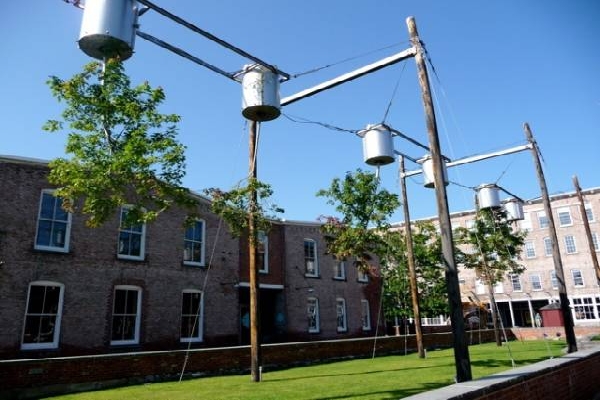This may not be exactly this-just-in news but we’ve recently discovered that one of our favorite Animal Artists has an ongoing installation at Mass MoCA that is yet another species-bending work. Natalie Jeremijenko’s Tree logic performs a double inversion by upending a series of trees along with our expectation about life-patterns and (QUOTE!) natural forces.
The installation was also featured on The Christian Science Monitor (is that surprising?) and they have a nice, personally approachable write up found here.
From the Mass MoCA site:
By framing certain phenomena, such as tree growth or suicides, as a data set, Jeremijenko’s work illustrates the ability of scientific presentation to transform information. These phenomena are accessible without the artist’s intervention, but her presentation of them allows the viewer to examine and question them in new ways. (In this sense, her inverted trees may be compared to Marcel Duchamp’s Fountain, actually an inverted urinal, of 1917.) Our perceptions of trees change when we view them as a collection of growth responses rather than as immutable symbols of the natural world.
The xdesign clinic website, (Natalie’s Own) describes the mental process of appreciating this artwork:
The slow gymnastics of these trees invites interpretation and speculation on what they will do, could do, how much they have grown or changed, and what birds think of them. Trees are icons of the natural, however, uprooted, they display a logic that redefines our own.
It reminds us of a work from Vito Acconci, years ago, with poplars suspended right side up in a spiral pattern. Can anyone find a picture of that? It’s eluding our google-skills.







